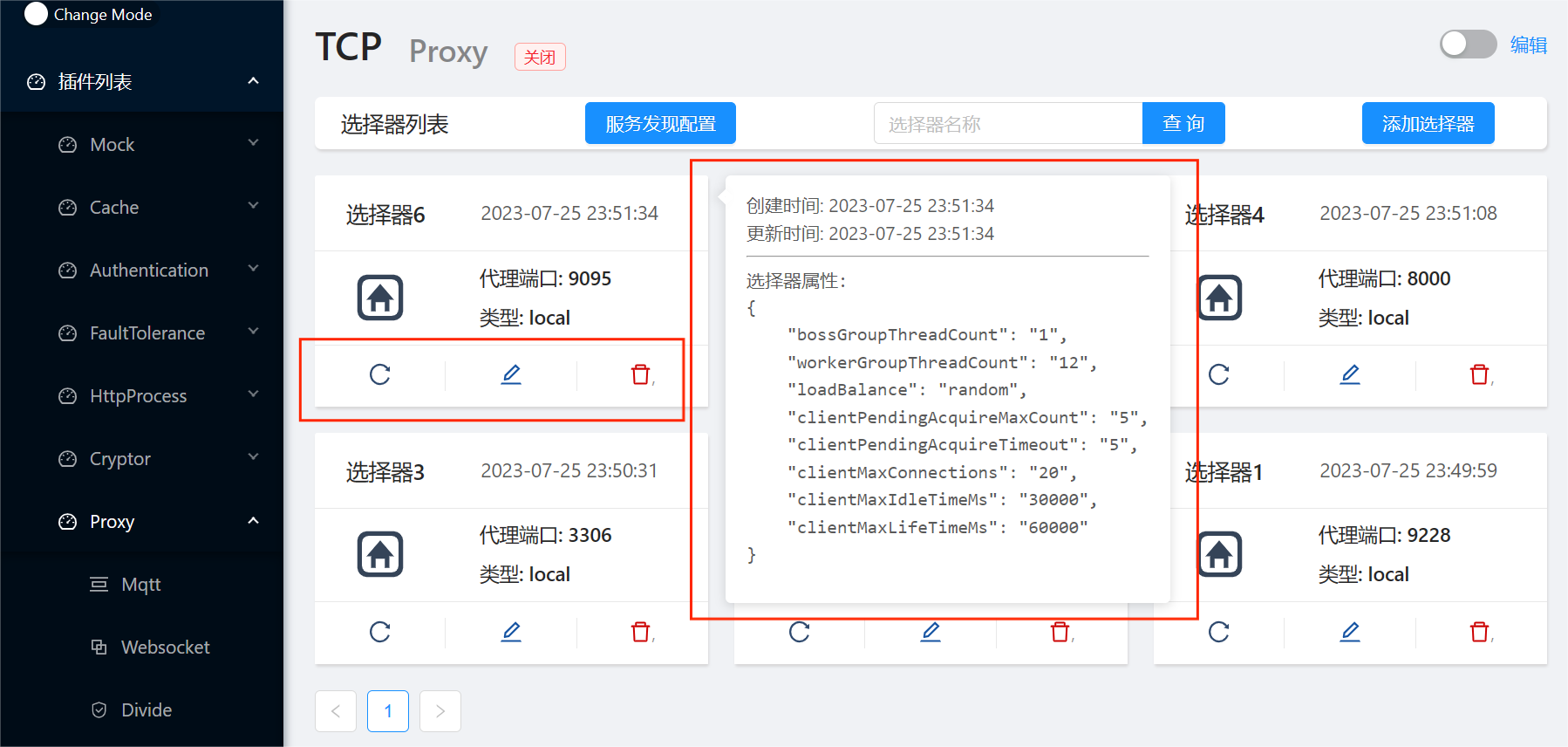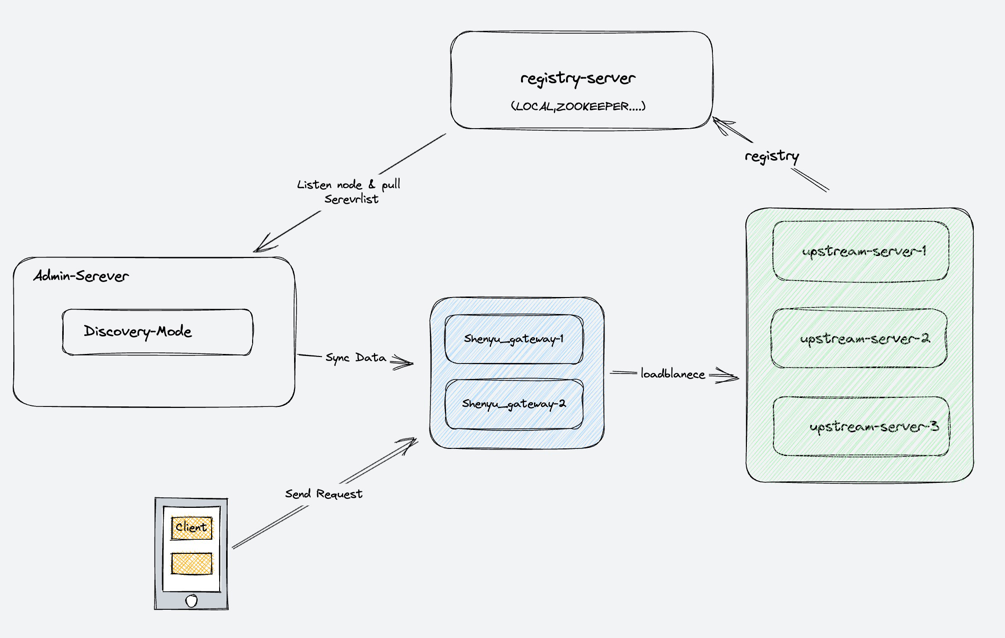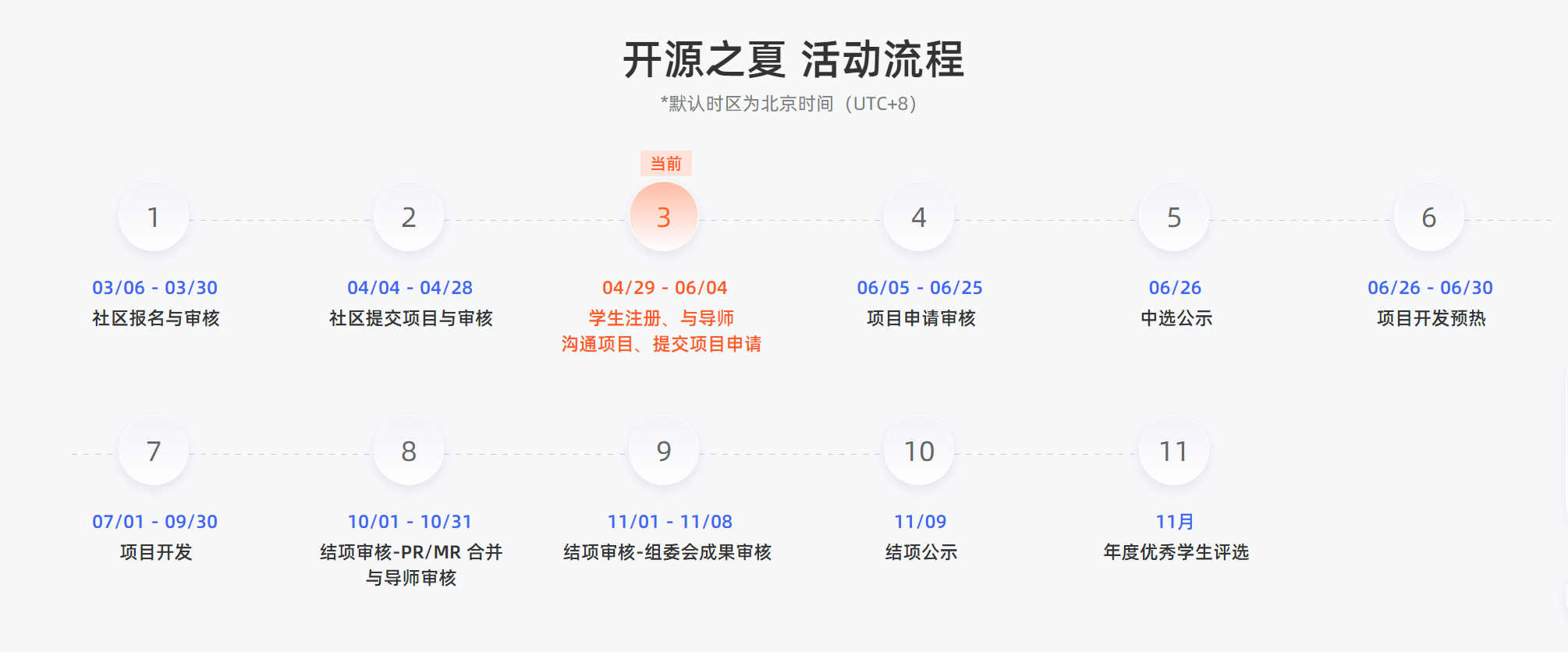Apache ShenYu
Apache ShenYu is a responsive API gateway developed using Java Reactor. With its high performance, dynamic and flexible traffic control, hot swap, easy deployment and other features, out of the box to provide users with a full lifecycle of 'API' gateway, including 'API' registration, service proxy, protocol conversion, 'API' documentation and 'API' governance and other functions. Apache ShenYu graduated as an Apache top-level project in 'July 2022'.
website: https://shenyu.apache.org
GitHub: https://github.com/apache/shenyu
Version preview
Six months later, Apache ShenYu released version 2.7.0, which submitted a total of 254+ Pull requests, added about 17+ new features, added several enhancements, refactored several features, and fixed several bugs. A total of 61 contributors participated, with a cumulative total of 350+ contributors.
version records: https://github.com/apache/shenyu/compare/v2.6.1...v2.7.0
✨ New Features
1.Upgrade dockerfile java runtime version 8 to 17
specific pr please see: https://github.com/apache/shenyu/pull/5374
2.Upgrade SpringBoot to 3.x
specific pr please see: https://github.com/apache/shenyu/pull/5583
3.Support ShenYu Admin Cluster
specific pr please see: https://github.com/apache/shenyu/pull/5544
https://github.com/apache/shenyu/pull/5592
4.Upgrade checkstyle plugin to 3.4.0
specific pr please see: https://github.com/apache/shenyu/pull/5614
5.Datasource support OceanBase
specific pr please see: https://github.com/apache/shenyu/pull/5617
6.Supports batch modification of selector/rule status
specific pr please see: https://github.com/apache/shenyu/pull/5499
7.Supports batch modification of PathAuth status
specific pr please see: https://github.com/apache/shenyu/pull/5488
8.Upgrade apache dubbo version
specific pr please see: https://github.com/apache/shenyu/pull/5527
9.Support Contribute with Gitpod
specific pr please see: https://github.com/apache/shenyu/pull/5610
10.Support Configs Export And Import
specific pr please see: https://github.com/apache/shenyu/pull/5474
11.Add shenyu client heartbeat
specific pr please see: https://github.com/apache/shenyu/pull/5659
12.Support Namespace
the specific use please see: https://shenyu.apache.org/docs/user-guide/admin-usage/namepsace
specific pr please see: https://github.com/apache/shenyu/pull/5584
https://github.com/apache/shenyu/pull/5715
https://github.com/apache/shenyu/pull/5716
https://github.com/apache/shenyu/pull/5719
https://github.com/apache/shenyu/pull/5729
https://github.com/apache/shenyu/pull/5734
https://github.com/apache/shenyu/pull/5735
https://github.com/apache/shenyu/pull/5740
https://github.com/apache/shenyu/pull/5746
https://github.com/apache/shenyu/pull/5757
https://github.com/apache/shenyu/pull/5760
https://github.com/apache/shenyu/pull/5765
https://github.com/apache/shenyu/pull/5769
https://github.com/apache/shenyu/pull/5771
https://github.com/apache/shenyu/pull/5779
https://github.com/apache/shenyu/pull/5786
https://github.com/apache/shenyu/pull/5790
https://github.com/apache/shenyu/pull/5798
https://github.com/apache/shenyu/pull/5799
https://github.com/apache/shenyu/pull/5823
https://github.com/apache/shenyu/pull/5847
https://github.com/apache/shenyu/pull/5857
13.Support k8s dynamically scale
specific pr please see: https://github.com/apache/shenyu/pull/5686
14.Invalidate Previous Tokens on New Login by Implementing Client ID Validation
specific pr please see: https://github.com/apache/shenyu/pull/5600
15.Support for gray release in divide-plugin
specific pr please see: https://github.com/apache/shenyu/pull/5763
16.Support Kubernetes registry
specific pr please see: https://github.com/apache/shenyu/pull/5769
⚡ Enhancement
1.Add rocketmq logging e2e test
specific pr please see: https://github.com/apache/shenyu/pull/5439
2.Enhance metrics-ratelimiter collect
specific pr please see: https://github.com/apache/shenyu/pull/5461
3.Enhance metrics collection for Sentinel, Resilience4j, and Hystrix
specific pr please see: https://github.com/apache/shenyu/pull/5468
4.Arrange sofa common tools dependencies
specific pr please see: https://github.com/apache/shenyu/pull/5609
6.Add missing license
specific pr please see: https://github.com/apache/shenyu/pull/5503
7.Set up callback for send message on Kafka
specific pr please see: https://github.com/apache/shenyu/pull/5748
8.Use the loadbalance configuration from metadata for Dubbo
specific pr please see: https://github.com/apache/shenyu/pull/5806
9.Add non null validation for upstream which obtained from select
specific pr please see: https://github.com/apache/shenyu/pull/5804
10.Set timeout which from rule handle to dubbo rpc context
specific pr please see: https://github.com/apache/shenyu/pull/5778
11.Publish event when enable selector and rule
specific pr please see: https://github.com/apache/shenyu/pull/5762
12.Remove closed session from the NAMESPACE_SESSION_MAP
specific pr please see: https://github.com/apache/shenyu/pull/5734
13.Add test case for ShenyuClientURIExecutorSubscriber
specific pr please see: https://github.com/apache/shenyu/pull/5413
14.Add test case for ShenyuClientIllegalArgumentException
specific pr please see: https://github.com/apache/shenyu/pull/5408
15.Add test case for ShenyuClientRegisterEventPublisher
specific pr please see: https://github.com/apache/shenyu/pull/5417
16.Add test case for ShenyuClientMetadataExecutorSubscriber
specific pr please see: https://github.com/apache/shenyu/pull/5404
17.Add test case for AbstractWasmPluginDataHandler
specific pr please see: https://github.com/apache/shenyu/pull/5451
18.Add test case for ShenyuClientRegisterRepositoryFactoryTest
specific pr please see: https://github.com/apache/shenyu/pull/5443
19.Add test case for AbstractWasmDiscoveryHandler
specific pr please see: https://github.com/apache/shenyu/pull/5453
20.Upgrade sofa rpc version support
specific pr please see: https://github.com/apache/shenyu/pull/5526
21.Add header key of Sign plugin to CrossFilter config
specific pr please see: https://github.com/apache/shenyu/pull/5627
22.Encrypt the password
specific pr please see: https://github.com/apache/shenyu/pull/5436
23.Add AbstractShenyuWasmPluginTest
specific pr please see: https://github.com/apache/shenyu/pull/5450
24.RewritePlugin/ContextPathPlugin supports across application and plugin
specific pr please see: https://github.com/apache/shenyu/pull/5438
25.Remove duplicate path check
specific pr please see: https://github.com/apache/shenyu/pull/5514
26.Remove Alibaba Dubbo Support
specific pr please see: https://github.com/apache/shenyu/pull/5500
27.Support docker env set http path
specific pr please see: https://github.com/apache/shenyu/pull/5833
28.Add some code refactor improve
specific pr please see: https://github.com/apache/shenyu/pull/5613
29.Support get token from cookie\header\param
specific pr please see: https://github.com/apache/shenyu/pull/5547
30.Make the default value of ShenyuDubboService annotation equal to that of DubboService annotation
specific pr please see: https://github.com/apache/shenyu/pull/5816
31.Add db script into admin package
specific pr please see: https://github.com/apache/shenyu/pull/5724
32.Get rid of the dead code and add some improvements
specific pr please see: https://github.com/apache/shenyu/pull/5849
https://github.com/apache/shenyu/pull/5803
https://github.com/apache/shenyu/pull/5789
33.MotanServiceEventListenerTest case optimization
specific pr please see: https://github.com/apache/shenyu/pull/5745
34.Delete duplicate maven in shenyu-registry-eureka.xml
specific pr please see: https://github.com/apache/shenyu/pull/5836
35.Jwt dependency updated
specific pr please see: https://github.com/apache/shenyu/pull/5480
36.Print plugin execute time
specific pr please see: https://github.com/apache/shenyu/pull/5437
37.Discovery Local support upstream health check in Admin
specific pr please see: https://github.com/apache/shenyu/pull/5596
38.Close rule cache
specific pr please see: https://github.com/apache/shenyu/pull/5589
39.Less concurrency
specific pr please see: https://github.com/apache/shenyu/pull/5587
40.Optimize logic to avoid "orElse" execution,Update VersionTwoExtractor.java
specific pr please see: https://github.com/apache/shenyu/pull/5415
♻️ Refactor
1.Admin distributed lock by spring-integration-jdbc
specific pr please see: https://github.com/apache/shenyu/pull/5457
2.Refactor beanUtils
specific pr please see: https://github.com/apache/shenyu/pull/5497
3.Remove macos ci
specific pr please see: https://github.com/apache/shenyu/pull/5559
4.Update logging plugin DataBuffer deprecated method
specific pr please see: https://github.com/apache/shenyu/pull/5620
5.Modify e2e k8s to docker compose
specific pr please see: https://github.com/apache/shenyu/pull/5710
6.Migrate Admin swagger from springfox to springdoc
specific pr please see: https://github.com/apache/shenyu/pull/5630
7.Refactor springcloud plugin
specific pr please see: https://github.com/apache/shenyu/pull/5695
8.Refactor some code
specific pr please see: https://github.com/apache/shenyu/pull/5568
9.Delete SO_SNDBUF & SO_RCVBUF
specific pr please see: https://github.com/apache/shenyu/pull/5502
10.Refactor shenyu-sync-data-http : replace log %s -> .
specific pr please see: https://github.com/apache/shenyu/pull/5465
11.Optimizing the node type listener
specific pr please see: https://github.com/apache/shenyu/pull/5435
12.Refactor plugin lifecycle
specific pr please see: https://github.com/apache/shenyu/pull/5432
13.Adjust code order and remove invalid input parameters
specific pr please see: https://github.com/apache/shenyu/pull/5397
🐛 Bug Fix
1.Fix duplicate header for request plugin
specific pr please see: https://github.com/apache/shenyu/pull/5846
2.Fix proxy.selector and discovery not delete when delete divide selector
specific pr please see: https://github.com/apache/shenyu/pull/5845
3.Fix LoggingPlugin error log catch
specific pr please see: https://github.com/apache/shenyu/pull/5842
4.Fix logging plugin sample bug
specific pr please see: https://github.com/apache/shenyu/pull/5429
5.Fix memory overflow
specific pr please see: https://github.com/apache/shenyu/pull/5407
6.Fix rewrite integrated test
specific pr please see: https://github.com/apache/shenyu/pull/5445
7.Fix AbstractWasmPluginDataHandlerTest
specific pr please see: https://github.com/apache/shenyu/pull/5464
8.Fix missing PRIMARY KEY in sql-script/h2/schema.sql
specific pr please see: https://github.com/apache/shenyu/pull/5481
9.Fix Data dictionary page data sorting exception
specific pr please see: https://github.com/apache/shenyu/pull/5483
10.FIx doc error
specific pr please see: https://github.com/apache/shenyu/pull/5505
11.Resolve dashboard routing mismatch post context-path update
specific pr please see: https://github.com/apache/shenyu/pull/5510
12.Fix etcd sync config problem
specific pr please see: https://github.com/apache/shenyu/pull/5535
13.Fix consul sync problem
specific pr please see: https://github.com/apache/shenyu/pull/5546
14.Fix the bug of being unable to query without registration
specific pr please see: https://github.com/apache/shenyu/pull/5578
15.Fix Plugin Edit Page Issue by Correcting Plugin ID Query and Updating Data Type
specific pr please see: https://github.com/apache/shenyu/pull/5622
16.Fix class AdminConstants has word spelling error
specific pr please see: https://github.com/apache/shenyu/pull/5637
17.Fix shenyu-examples-springmvc start failed
specific pr please see: https://github.com/apache/shenyu/pull/5664
18.Fix dashboard menu children sort not working problem
specific pr please see: https://github.com/apache/shenyu/pull/5691
19.Fix ShenyuApacheDubboXmlProviderApplication config
specific pr please see: https://github.com/apache/shenyu/pull/5811
20.Fix data sync dataId for proxy selector and discovery is not unique
specific pr please see: https://github.com/apache/shenyu/pull/5783
21.Filter disable dict option
specific pr please see: https://github.com/apache/shenyu/pull/5776
22.Fix SpringCloudParser MetaData null data
specific pr please see: https://github.com/apache/shenyu/pull/5737
23.Fix client register validation
specific pr please see: https://github.com/apache/shenyu/pull/5764
24.Config dubbo serialize-check-status=DISABLE
specific pr please see: https://github.com/apache/shenyu/pull/5756
25.Fix example TestApacheDubboXmlApplication start failed
specific pr please see: https://github.com/apache/shenyu/pull/5754
26.Fix the nacos data sync model missing the contextPath configuration
specific pr please see: https://github.com/apache/shenyu/pull/5722
27.Fix SPI create non singleton objects in multi-threaded scenarios
specific pr please see: https://github.com/apache/shenyu/pull/5713
28.Fix BadSqlGrammarException
specific pr please see: https://github.com/apache/shenyu/pull/5707
29.Fix ListUtil->merge exception
specific pr please see: https://github.com/apache/shenyu/pull/5642
30.Fix metaData disable not filtered
specific pr please see: https://github.com/apache/shenyu/pull/5638
31.Fix divide logging request method
specific pr please see: https://github.com/apache/shenyu/pull/5607
32.Fix e2e chunk header error
specific pr please see: https://github.com/apache/shenyu/pull/5593
33.Fix cookie error and sql check
specific pr please see: https://github.com/apache/shenyu/pull/5567
34.Fixed NPE issue
specific pr please see: https://github.com/apache/shenyu/pull/5539
https://github.com/apache/shenyu/pull/5530
35.Fix Invalid path error
specific pr please see: https://github.com/apache/shenyu/pull/5533
36.Fix hot load issue
specific pr please see: https://github.com/apache/shenyu/pull/5509
37.Fix e2e test case can not run wget command
specific pr please see: https://github.com/apache/shenyu/pull/5519
38.Fix fallback issue
specific pr please see: https://github.com/apache/shenyu/pull/5496
39.Resolve the sql error in rule-sqlmap.xml
specific pr please see: https://github.com/apache/shenyu/pull/5644
40.Fix readYmlBuildRepository NPE
specific pr please see: https://github.com/apache/shenyu/pull/5819
41.Fix nacos cannot be registered in the Shenyu-examples-SpringCloud project
specific pr please see: https://github.com/apache/shenyu/pull/5825
42.Fix springCloud ruleData path setting didn't used
specific pr please see: https://github.com/apache/shenyu/pull/5841
https://github.com/apache/shenyu/pull/5843
43.Fix shenyu-plugin-logging-elasticsearch : modify setIndexName of ElasticSearchLogConfig
specific pr please see: https://github.com/apache/shenyu/pull/5830
44.Fix Not first offline from the gateway when stopping service
specific pr please see: https://github.com/apache/shenyu/pull/5507
45.Fix k8s liveness probe can not run wget command error
specific pr please see: https://github.com/apache/shenyu/pull/5513
46.Fix AbstractNodeDataSyncService load discoverUpstream on startup
specific pr please see: https://github.com/apache/shenyu/pull/5473
Contributors
Special thanks to the following contributors for their support and participation in the '2.7.0' release (in no particular order).
0xmkzt,Divyansh200102,IceFoxs,JJellyfish,Kerwin Bryant,M.G. Ting,Misaya295,NanMu,Qi Xu,RayayChung,Ricco Chen,Sinsy,
VampireAchao,WindSearcher,Wweiei,Yu Siheng,aias00,caaaaaat,crazyStar,crudboy,dragon-zhang,dyjxg4xygary,dyp314417995,
eye-gu,frank,hdgaadd,hql0312,j@ckzh0u,jerbo99,loongs-zhang,mmengLong,moremind,po-168,tomsun28,ttfont,wlngo,wyfvsfy,
xcsnx,xiangqianZ,xiaoyu,yunlongn,ywwana,zhengke zhou,zhengpeng,ywj1352
Become a contributor
We welcome every contributor to join ShenYu, and welcome contributors to participate in ShenYu in the spirit of Apache Way!
See the contributor guidelines:
https://shenyu.apache.org/zh/community/contributor-guide



